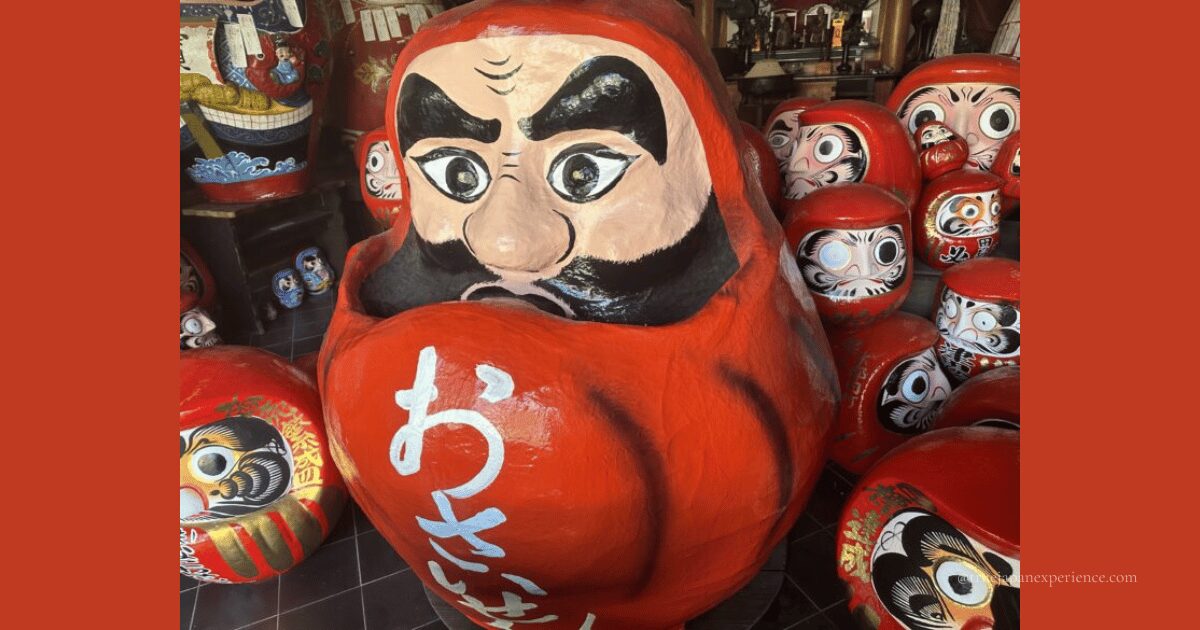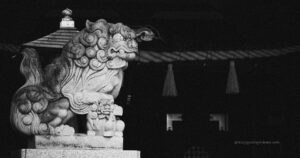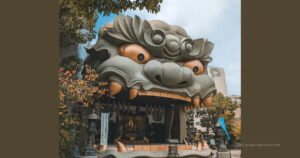Have you ever stepped through a small wooden gate and felt like you entered a wonderland? That’s the feeling you get at Darumadera Temple Kyoto.
As soon as you walk inside, you see thousands of bright red daruma dolls all around you. The temple is quiet and calm, hidden away from the busy streets of the city.
Each daruma doll has a round shape and a strong look, and people believe they bring hope and good luck. When you stand among them, it feels like time slows down, and each daruma is waiting to share its story with you.
Darumadera Temple Kyoto is a special place with more than 8,000 daruma dolls. In this guide, you’ll discover the temple’s history, the meaning of the daruma, and what makes this temple such a unique spot to visit.
By the end, you’ll see why Darumadera is called a peaceful hideaway in Kyoto, and you’ll get useful tips to enjoy your visit even more.

The History of Darumadera Temple Kyoto: Horinji’s Story

Horinji Temple, called 法輪寺 (Hourinji) in Japanese, is a Zen temple of the Myoshinji sect in Kyoto’s Kamigyo Ward.
It was first built in 1727, during the Edo period, by a Zen master named Daigu Soshuku. He had support from a local merchant, Araki Soutei.
This makes the temple special, because many temples in Japan were started by samurai families, but Horinji began with the help of a merchant.
Over the years, the temple faced fires and hard times, but it was always rebuilt with care.
In the 20th century, the 10th head priest, Goto Isan, helped bring the temple back to life. Thanks to him, Horinji became an important place for both spiritual practice and local culture.
The main statue worshiped here is Shakyamuni Buddha (Shaka Nyorai).
The temple grounds also have peaceful Zen gardens, made to help people sit quietly, meditate, and reflect. Today, Horinji is still an active Zen temple and a cultural treasure of Kyoto.
The Amazing Daruma Collection You Can’t Miss
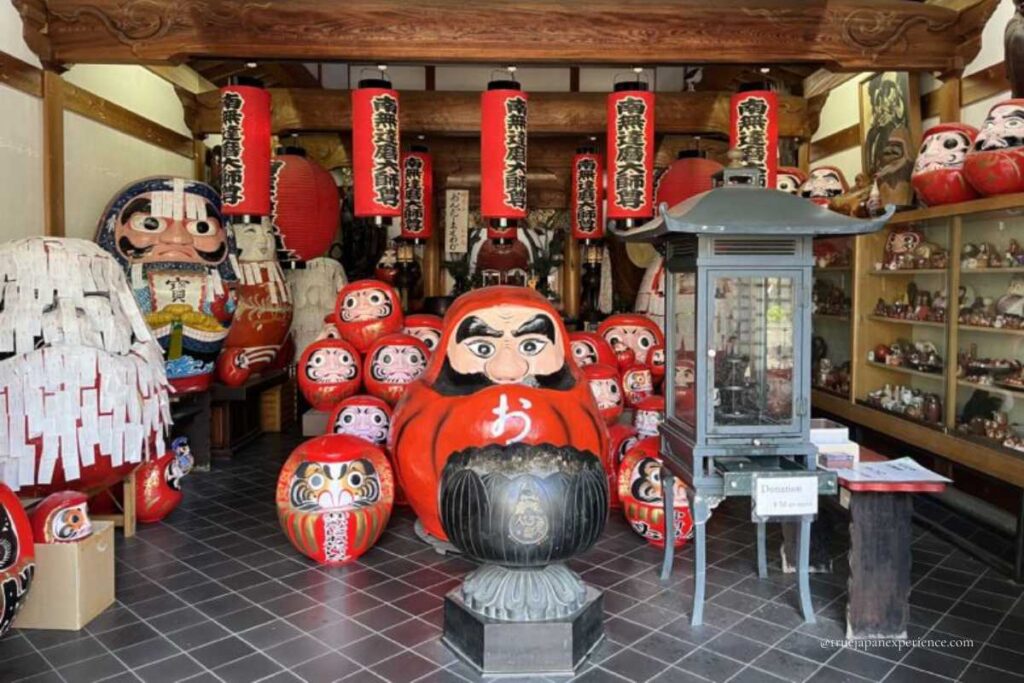
Darumadera Temple Kyoto has more than 8,000 daruma dolls on display.
They come in many sizes and styles, giving the temple a bright and cheerful feeling.
The dolls don’t just sit still—they seem full of energy and welcome visitors from all over Japan.
The classic red daruma is believed to bring courage and good luck.
Golden daruma dolls stand for wealth and success, so they are popular with business people and students.
Each daruma carries a strong message: never give up, even when life is difficult.
Many visitors also take daruma dolls home as gifts or charms, keeping the temple’s spirit of hope alive.
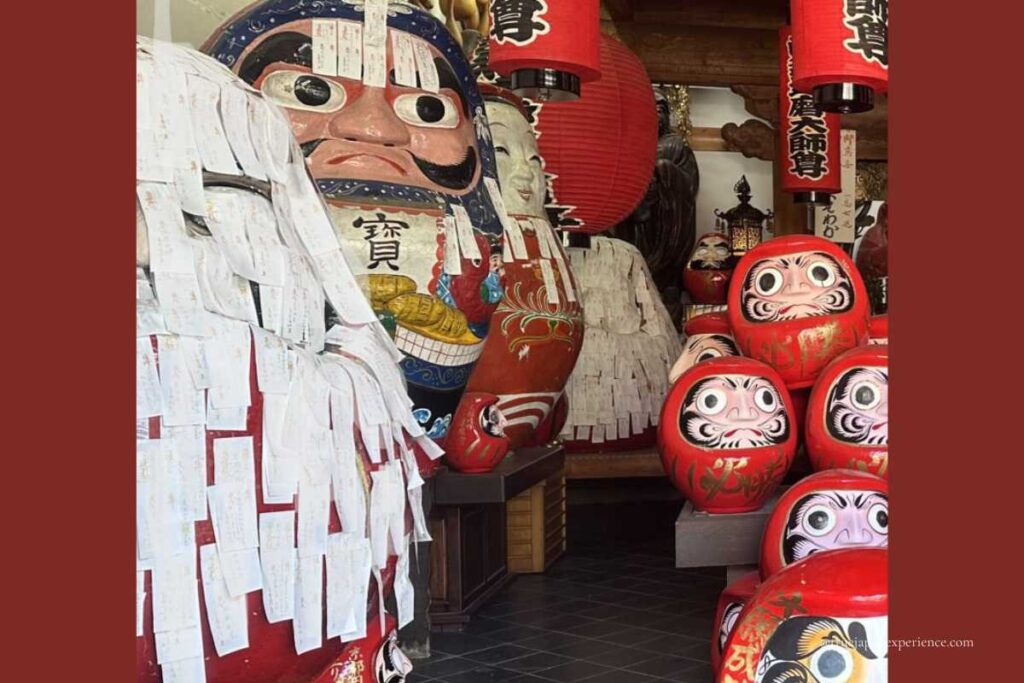
Some of the daruma dolls at Darumadera Temple are completely covered with paper slips, as you can see in the photo above.
These are votive slips with written wishes, carefully pasted onto the daruma.
The slips are available at the reception desk located just to the right after you pass through the temple gate. There, you can borrow a pen and glue to write down your own wish and attach it to a large daruma doll while offering your prayer.
The friendly staff will kindly explain the steps, so even first-time visitors can enjoy this unique experience.
Things to See and Do
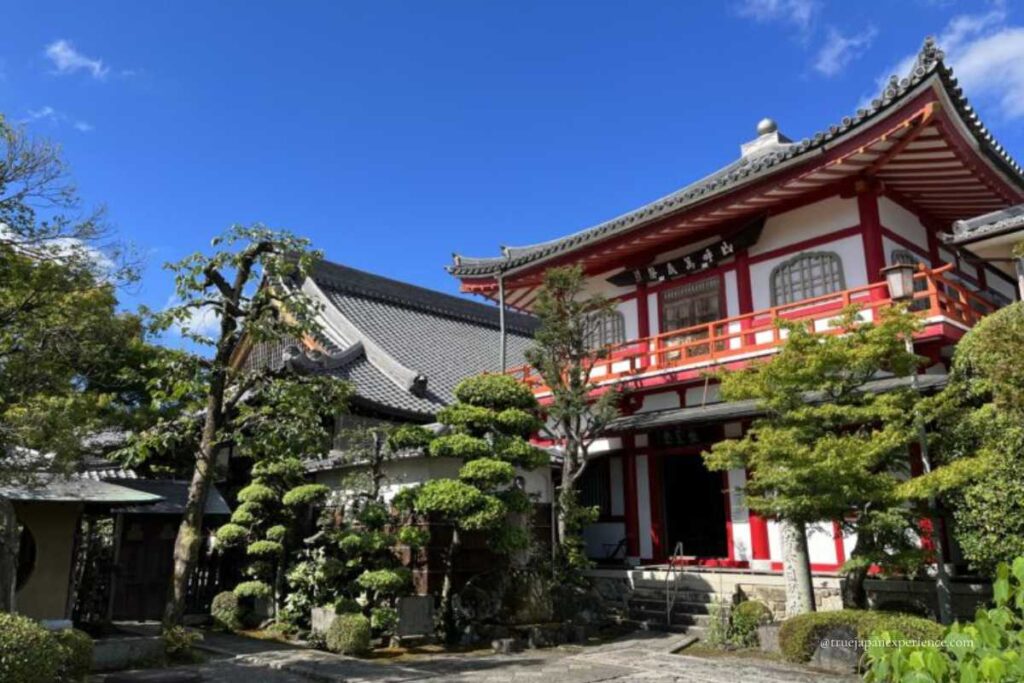
A visit to Darumadera Temple Kyoto is more than just looking at daruma dolls. The temple offers peaceful spots and special cultural experiences.
In the main hall, the ceiling is decorated with paintings by famous artists, many inspired by the daruma theme.
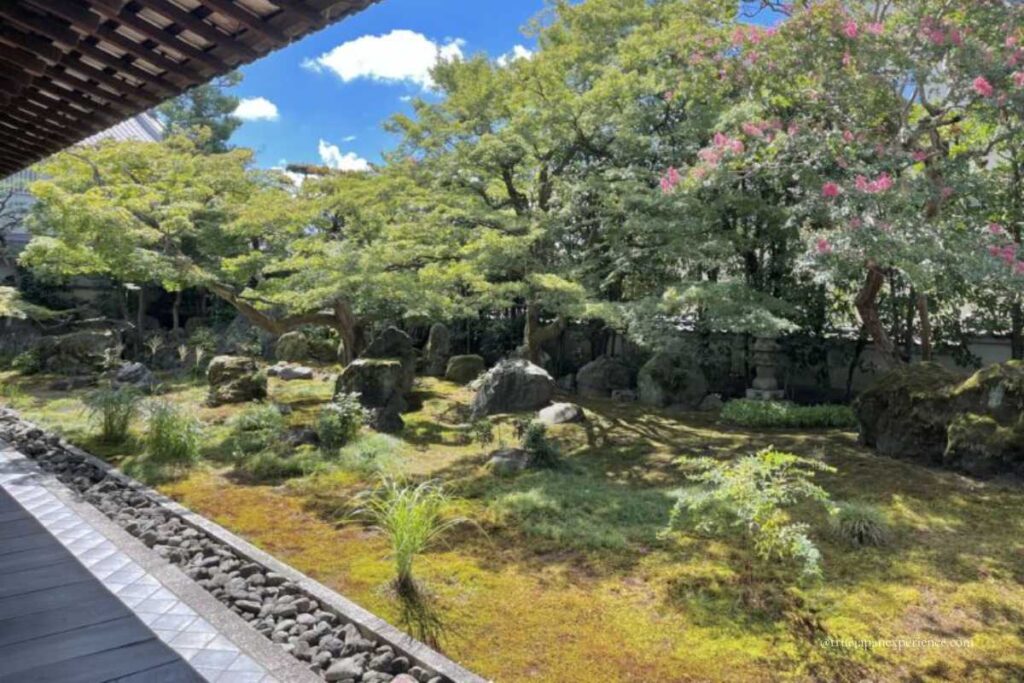
Outside, you can walk through a quiet Zen garden. It is carefully kept and changes with the seasons—cherry blossoms in spring and bright red leaves in autumn.
There is also a small exhibition corner that shows movies and art connected to daruma dolls. This space is a fun way to see how the daruma spirit still inspires modern culture.
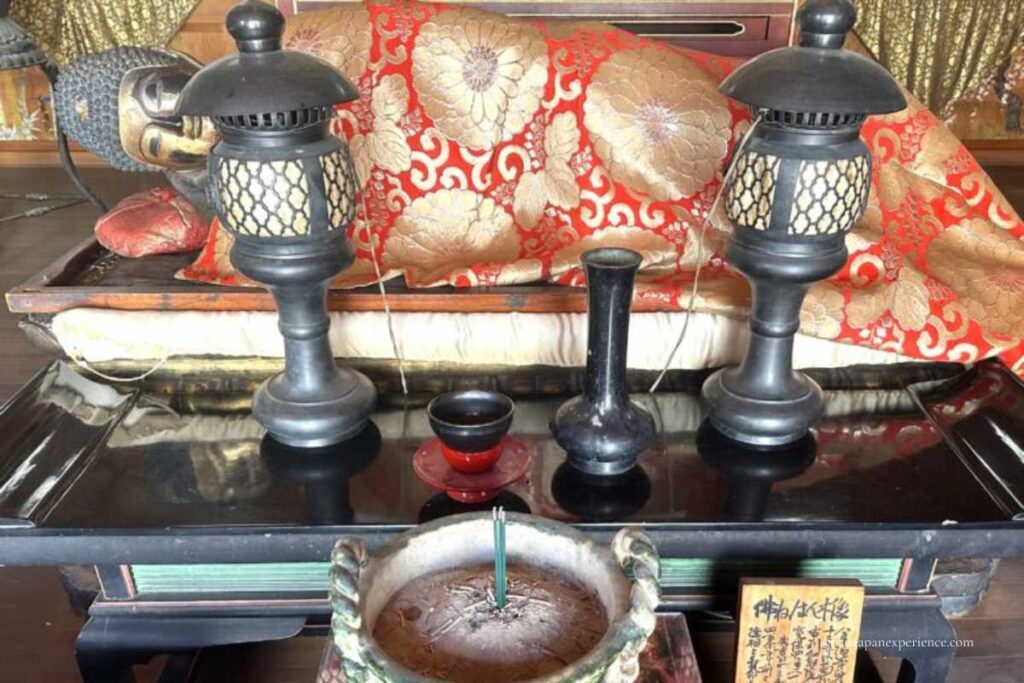
On the second floor of the building, visitors can also find a reclining Buddha (Nehan statue), adding another spiritual highlight to the temple.
Many visitors say they feel a warm link between art, history, and nature here. This mix makes Darumadera Temple Kyoto a truly special place to visit.
Basic Information and Access to Horinji (Darumadera Temple Kyoto)
Horinji, also known as Darumadera Temple, is easy to visit and offers a calm retreat within Kyoto. Here is the key information for your trip:
Practical Tips
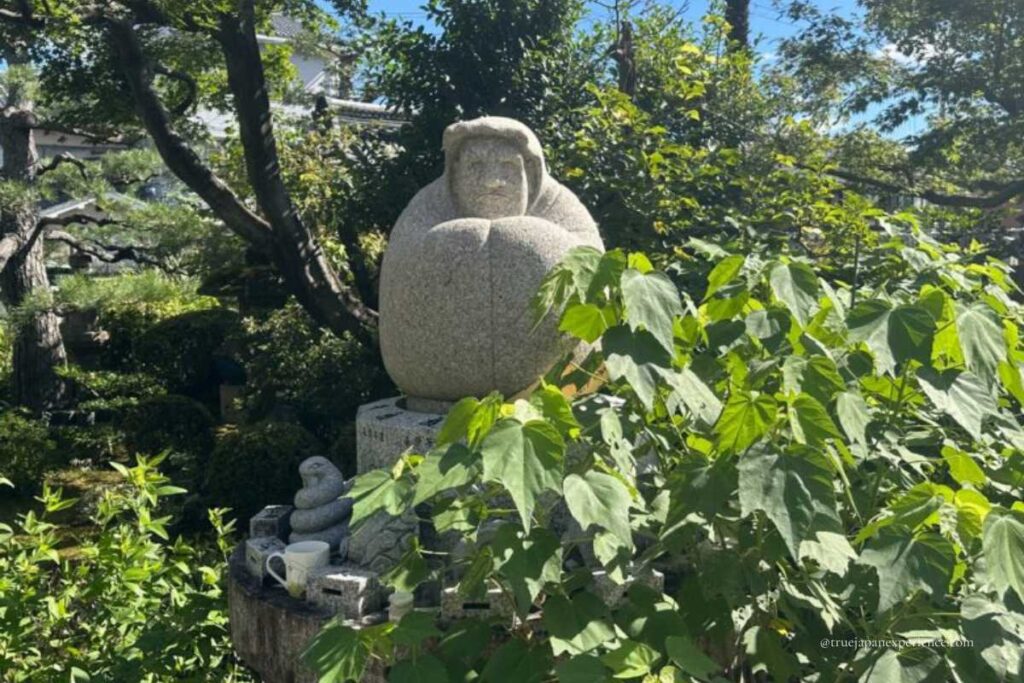
Horinji, also known as Darumadera Temple, is located in Kyoto’s Kamigyo Ward, near the Kamiyagawa River and the famous Kitano Tenmangu Shrine. It is easy to reach from many parts of the city, making it a convenient stop on your trip.
Entrance to the temple gardens is free, but there is a small fee to enter the main hall where the largest daruma collection is displayed.
Bringing a camera is a great idea, as both the temple grounds and the inside areas offer beautiful photo spots. The calm atmosphere makes your pictures even more special.
Visiting early in the morning or on weekdays helps you avoid crowds. You’ll have more time to enjoy the daruma dolls quietly, and you may even meet the kind temple staff who sometimes share interesting stories if you ask politely.
Don’t forget to check the small temple shop. They sell unique souvenirs such as charms, amulets, and clear files decorated with daruma designs—perfect to take home as a memory or gift.
Conclusion: Make Your Wish at Darumadera Temple Kyoto

Darumadera Temple Kyoto is not just a sightseeing spot. It’s a place where you can experience Japanese culture, Zen philosophy, and a spirit of hope that lives on in every daruma doll.
When you visit, try making a wish on your own daruma doll—the tradition is that you paint one eye while making the wish and paint the other when it comes true.
This peaceful temple welcomes you to slow down, reflect, and find your own moment of calm.
Who knows? You may leave with a new daruma doll and a wish that one day will come true.
